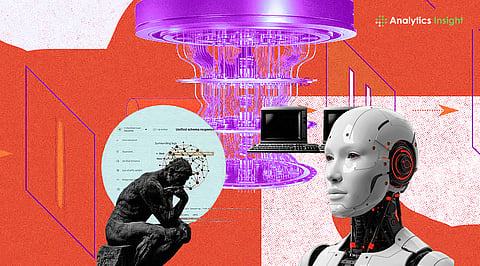

Each serves a different purpose. AI focuses on learning, reasoning, and decision-making, while quantum computing specializes in solving complex calculations at high speed.
Present-day quantum systems are limited and mainly experimental. They have not yet reached the level needed for large-scale commercial use, but progress is steady.
Quantum computing will strengthen AI by making data processing faster and more efficient. Together, they can unlock breakthroughs in science, healthcare, and technology.
Quantum computing has advanced significantly in recent times. Although the technology is innovative, industry insiders are still not sure whether it will outpace AI in general use cases in the short term. The field's influence remains focused on specific areas, where quantum systems can improve tools and calculations. Most artificial intelligence capabilities still depend on classical computing power.
As AI grows through accelerator technologies, quantum hardware is gradually moving toward fault-tolerant systems projected for later in the decade, built for selective advantages rather than complete replacement.
Overtaking AI would imply that quantum systems broadly replace classical AI training and inference across core tasks, such as language modeling, vision, and agents, which current evidence does not support, given quantum’s problem-specific advantages and ongoing error correction requirements. Experts state that quantum computers will not replace classical computers, but rather complement them, supporting functions rather than substituting across various sectors.
Also Read: How Quantum Computing Is Revolutionizing Cloud Security
IBM’s updated roadmap targets a large‑scale, fault‑tolerant system, IBM Quantum Starling, by 2029. The AI computation interface boasts 200 logical qubits capable of running roughly 100 million gates. This indicates meaningful but domain‑specific capabilities rather than general AI displacement.
Google has demonstrated progress toward below-threshold quantum error correction for logical qubits, a crucial step for scalable machines. However, this represents a path to reliability rather than an immediate broad AI replacement.
Performance leaders like Quantinuum and IonQ report advances such as record Quantum Volume on H2 and algorithmic qubits on IonQ Tempo, which are important milestones but remain within a trajectory of gradual capability building.
Training computer and AI supercomputer capacity have grown at extraordinary rates, with Epoch estimating 4–5x annual training compute growth and leading AI supercomputers doubling performance roughly every nine months through larger clusters and better chips.
New accelerator platforms such as NVIDIA Blackwell and Google’s TPU v5p deliver large step changes in performance, memory, and interconnect scale, directly fueling ongoing advances in AI models and inference efficiency.
The stock of available NVIDIA computers has been doubling on timescales of nearly ten months since 2019, and dozens of GPT‑4‑scale training efforts have been reported, underscoring the entrenched momentum of classical AI infrastructure.
Hybrid quantum‑classical methods may offer advantages in optimization, sampling, and certain simulation‑driven workflows that support AI systems, rather than replacing core learning pipelines. Several vendors and researchers are exploring “Quantum‑AI” combinations, such as frameworks and demonstrations aimed at integrating quantum processors into AI or scientific pipelines, though these are early and problem-specific.
IBM’s plan for a 200‑logical‑qubit, 100‑million‑gate fault‑tolerant machine by 2029 and Google’s error‑correction progress define realistic milestones for scaled quantum reliability, not a generalized AI takeover.
Independent timelines vary, with some analyses placing broadly useful, error-corrected applications in the 2030s, reinforcing that near-term gains remain domain-specific.
Meanwhile, AI infrastructure continues compounding with Blackwell‑class GPUs and TPU v5p pods, raising the bar for any alternative computing modality to displace mainstream AI training and inference.
Quantum risk is a real concern for current public-key cryptography, which is why NIST finalized FIPS 203, 204, and 205, as well as government roadmaps such as CNSA 2.0, which set migration milestones through 2030–2035.
Organizations should prioritize “harvest now, decrypt later” mitigation by inventorying cryptography, planning PQC upgrades, and following NIST migration guidance to align with staged timelines.
Also Read: Can We Really Trust Answers from Quantum Computers?
Organizations can prepare for the next wave of computing by combining quantum‑driven exploration with established AI capabilities. They should test quantum-inspired modules to help ease bottlenecks in optimization or modeling tasks.
Active investment in AI accelerator hardware must continue to support model performance and scalability. Monitoring advances such as qubit quality, gate precision, and benchmark stability will help businesses align technology adoption with credible vendor milestones.
You May Also Like:
Will quantum computing replace AI?
No. Quantum computing and AI serve different roles. AI learns from data, while quantum computing solves complex calculations. They complement each other.
What does “overtake AI” mean?
It means replacing classical AI systems with quantum ones across core tasks. Current research shows this is unlikely.
When will quantum computing become practical?
Experts expect fault-tolerant systems in the 2030s. For now, quantum computers are still experimental.
How can quantum computing help AI?
Quantum systems can assist with optimization, sampling, and simulations that support AI models.
What limits quantum computing today?
Qubits are unstable and prone to errors. Improving reliability is the main challenge.
